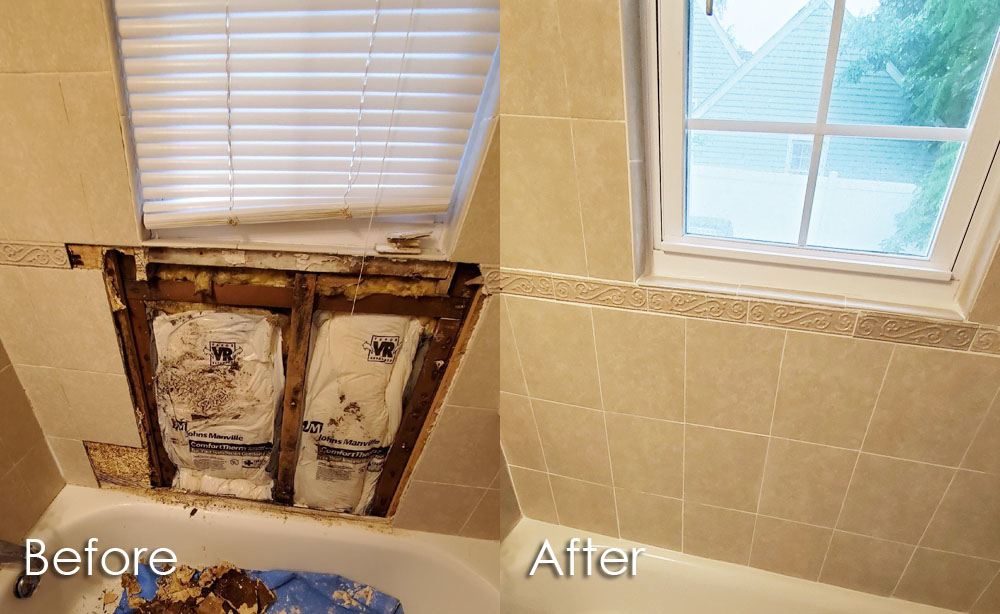How do you actually feel on the subject of Preventing Water Damage in the Bathroom?

The washroom is exceptionally susceptible for moist accumulation and also prospective water damage due to the constant use of water in it. This write-up uses easy examination methods to help detecting water damages dangers.
The frequent use water in the shower room makes it extremely at risk for damp accumulation and also prospective water damage. By evaluating it frequently, you can reduce water related damages.
The adhering to set of inspections is very easy to carry out and also must be done once in every 3 months in order to keep your washroom in good shape and also to avoid possible water damages caused by the tub, the shower, pipe joints as well as plumbing, sinks, cabinets, as well as the toilet
Do not disregard performing these assessments and be complete while performing them. Remember that these easy examinations can save you a great deal of money by supplying very early indicators for water damages
Bathtub as well as Shower
The shower and tub call for special interest and also maintenance. Examine the tiles as well as change if cracked. Make certain that there is no missing out on grout in between the tiles. Examine and also replace broken caulking at joints where the wall surfaces meet the floor or the tub. Obstructed drains as well as pipelines problems will stop the bathtub from drying and may show serious issues underneath the bath tub. Consult with an expert right away to stop structural damage. Focus on stainings or soft locations around the bathtub walls as they may suggest an inner leak.
Plumbing
Signs for water damage are difficult to find given that the majority of pipes are installed inside the walls.
Pay special interest to floor covering and also wall surfaces moisture and spots as they may suggest an undetectable plumbing trouble. Examine moisture levels in adjoining spaces also.
Sinks as well as Cabinets
Sinks as well as closets are revealed to dampness and also moisture daily and are frequently neglected. Examine frequently under the sink as well as on the counter top over it. Fix any type of drip in the catch as it might recommend drainpipe issues. Browse the sink, sluggish draining pipelines might suggest a blocked drain. Replace sink seals if they are broken or loose.
The Toilet
The toilet is a vulnerable water joint. Examine the water lines and also look for leakages around the bathroom seat, in the hose pipe, as well as under the water storage tank. If you spot any signs of moisture on the flooring around the commode, look for leakages in the toilet rim and tank seals.
Be aware that hanging commode dish antiperspirants enhances the chances for clogs.
How to Prevent Water Damage in Your Bathroom?
Water damage repair is an expensive, meticulous, and lengthy process. Unfortunately, bathrooms are the most susceptible rooms to water damage due to toilets, showers, and sinks. Pipes and fixtures wear out over time and are not immune to damage. But all is not lost, as there are ways to prevent water damage from occurring in your bathroom.
Check Your Plumbing
Nothing lasts forever, especially pipes, which can rust and begin leaking over time. You should periodically conduct pipe inspections and pay attention for any musty smells or water stains that may indicate you need water damage repair. Here are some things to check:
Frequently test valves for your toilet, shower, and sink to ensure they are properly working. Check faucet supply lines hidden under vanities and replace when needed. Replace cracked or deteriorating caulking along sinks, tubs, and showers. If you notice a clog in your sink, call in a professional. Since you can’t check the pipes in the wall, keep an eye out for stains, drywall bubbling, musty smells, and excess moisture; if the bathroom is on a second level, check the ceiling of the room directly below for these signs. Don’t Overwork Your Toilet
One of the most common reasons bathrooms need water damage repair is due to overflowing toilets. Save yourself the hassle of cleanup by being mindful and not pushing your toilet to extreme limits. If you have young children, it is especially important to keep an eye on them when they are in the bathroom and to teach them how to avoid clogging the toilet. Here are some more tips to help prevent your toilet from overflowing:
If you have a septic tank, only use septic-safe toilet paper Do not flush anything down the toilet besides toilet paper; items like diapers and sanitary napkins will clog the piping Pay attention to your toilet’s water level: If it’s low, it could mean it is partially clogged or that there is a crack in the toilet bowl Maintain Your Shower/Tub
Replace showers or tubs with cracks or other damage; even hairline cracks can allow water to seep in and cause damage. Grout and caulk help prevent water from seeping into walls and floors, so repair them if they are chipped, cracked, or deteriorating. Replace torn shower curtains or shower doors with seals that no longer work. Dry the floor and drain water from the tub immediately after use to prevent damage from sitting water. https://www.alure.com/home-improvements-blog/resources/how-to-prevent-water-damage-in-your-bathroom

As an avid reader about How to Prevent Bathroom Water Damage, I think sharing that excerpt was a good idea. Sharing is caring. One never knows, you may be doing someone a favor. Kudos for your time. Please check our site back soon.
Request Appointment